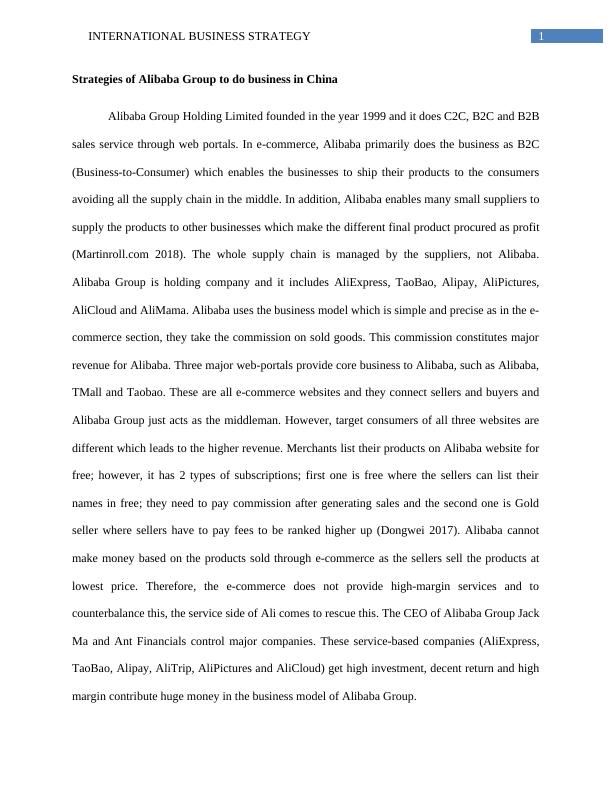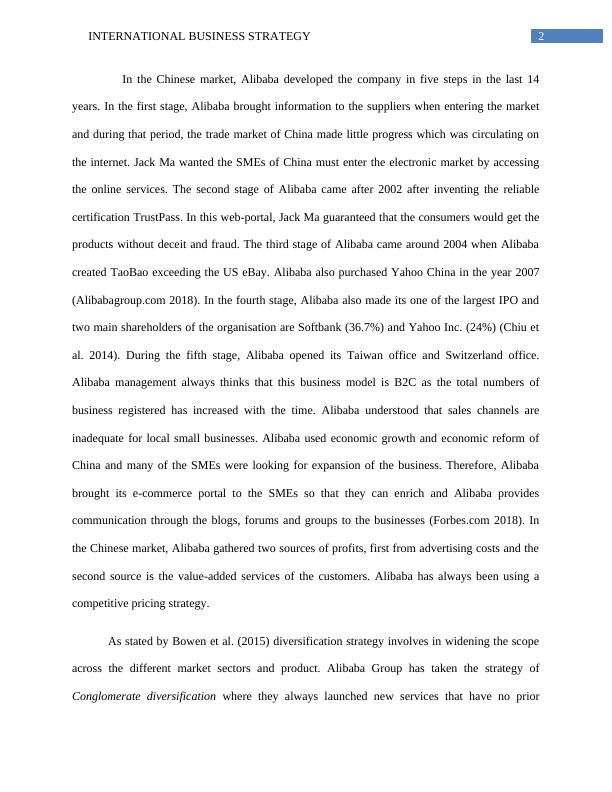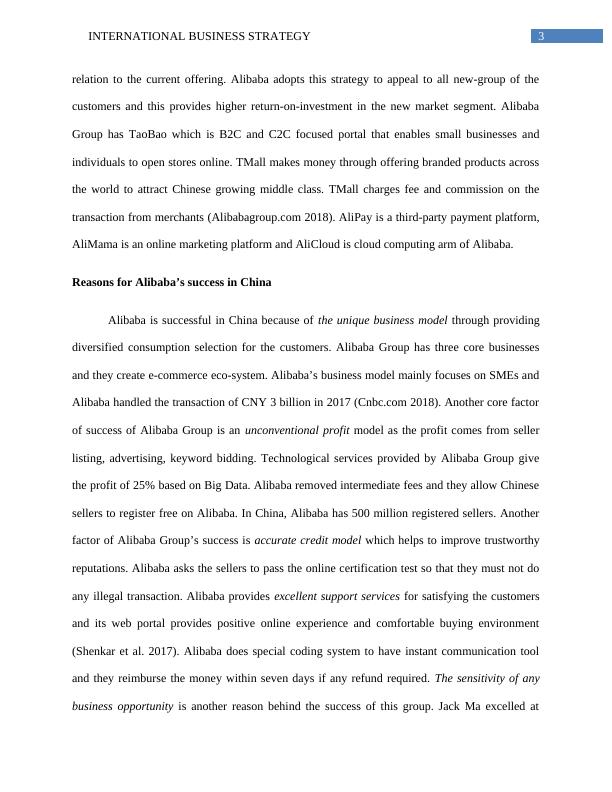Strategies of Alibaba Group for Business in China and Overseas Markets
11 Pages2990 Words291 Views
Added on 2023-06-07
About This Document
This article discusses the strategies of Alibaba Group for doing business in China and overseas markets, including their success factors and competitive advantages. It covers their business model, diversification strategy, and success factors in China, as well as their plans for international expansion and achieving competitive advantages in the global e-commerce market. The feasibility of their China strategy in overseas markets is also analyzed.
Strategies of Alibaba Group for Business in China and Overseas Markets
Added on 2023-06-07
ShareRelated Documents
End of preview
Want to access all the pages? Upload your documents or become a member.
Alibaba business model Evaluation Assignment PDF
|7
|1422
|580
Alibaba business model Evaluation Assignment PDF
|7
|1437
|181
IS 320 - Competitive Strategy Assignment | Alibaba and Tesco
|5
|1343
|54
Ali Baba | Case Study - MGMT3001
|38
|8961
|100
Project Development of Taobao Online Shopping Site
|6
|2471
|20
Information System and Marketing - Alibaba Group
|11
|2490
|528




